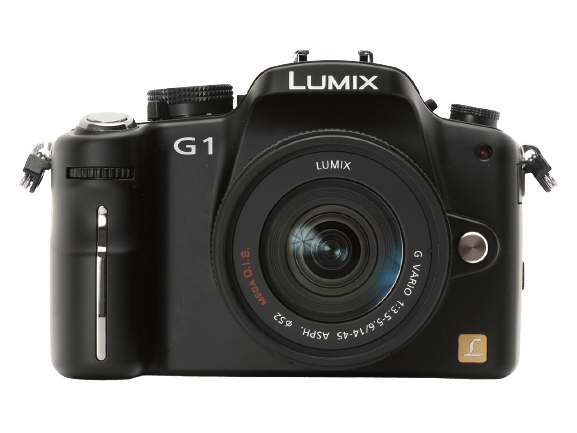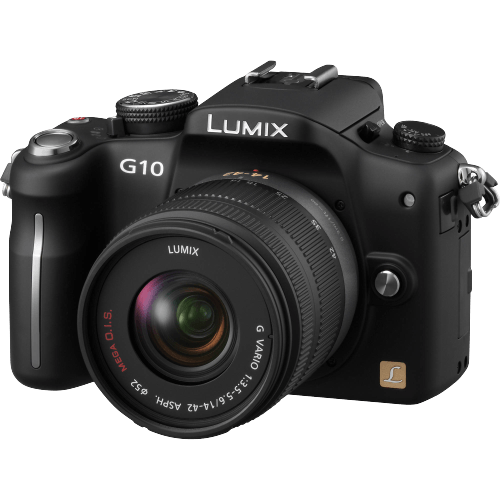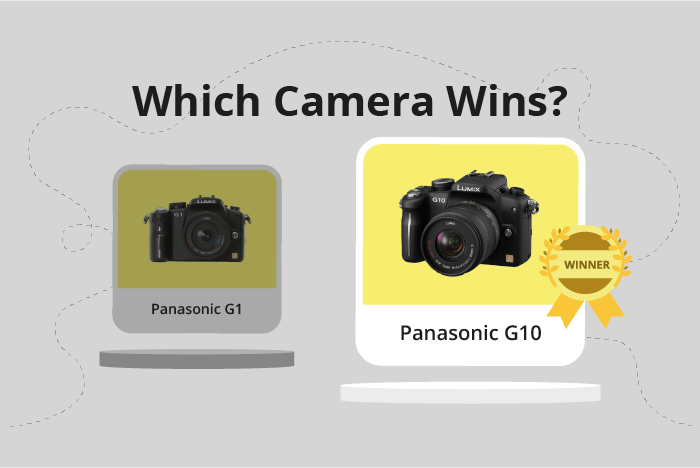Panasonic Lumix DMC G1 vs Lumix DMC G10 Comparison
Panasonic Lumix DMC G1

Panasonic Lumix DMC G10

The Panasonic Lumix DMC G10 takes the lead with a score of 40/100, while the Panasonic Lumix DMC G1 trails behind at 36/100. Both cameras share the same mirrorless camera type and similar dimensions, with the G10 being slightly larger and heavier at 124 x 90 x 74mm and 388g compared to the G1’s 124 x 84 x 45mm and 360g.
The G10 has a clear advantage in its lower launch price of $600, making it more affordable than the G1’s initial price of $790. Additionally, the G10’s announcement and release in 2010 gives it a more modern edge over the 2008-released G1.
However, the G1 has the upper hand in terms of a lighter and more compact design, which might be more appealing for some users. Despite these differences, both cameras have their merits and potential drawbacks, ultimately leaving the choice up to individual preferences and needs.
Panasonic Lumix DMC G1 vs Lumix DMC G10 Overview and Optics
The Panasonic Lumix DMC G10 emerges as the winner in the optics comparison with a score of 44/100, while the Panasonic Lumix DMC G1 trails behind with a score of 38/100. Both cameras share several specifications, including a 12.1-megapixel resolution, CMOS sensor type, Venus Engine HD II processor, a DXOMARK score of 52 for the sensor, Micro Four Thirds sensor size, and a Micro 4/3 lens mount.
The Lumix DMC G10 offers advantages over the DMC G1, such as a slightly faster shooting speed of 3.2 frames per second compared to the G1’s 3 frames per second. This difference allows the G10 to capture images with better speed and precision. Additionally, the G10 has image stabilization, which the G1 lacks. Image stabilization is crucial for reducing blur caused by camera movement, making the G10 a better choice for capturing sharp images.
On the other hand, the Lumix DMC G1 does not present any significant advantages over the G10 in terms of optics. Both cameras share the same megapixel count, sensor type, processor, and DXOMARK score. Therefore, the lower score of the G1 does not translate into any specific benefits in the optics department.
Considering the higher score and the presence of image stabilization in the G10, it is clear that the Panasonic Lumix DMC G10 is the superior choice when comparing the optics of these two cameras. The G1, with its lower score and lack of image stabilization, does not offer any distinct advantages in this area. Thus, for those seeking better performance in terms of optics, the Panasonic Lumix DMC G10 is the more suitable option.
Panasonic Lumix DMC G1 vs Lumix DMC G10 Video Performance
When comparing the video capabilities of the Panasonic Lumix DMC G1 and the Panasonic Lumix DMC G10, both cameras have the same video score of 34/100. This score reveals that the two cameras have similar video features and performances.
The Panasonic Lumix DMC G1 and the Panasonic Lumix DMC G10 share common video specifications. Both cameras offer a maximum video resolution of Standard HD and a maximum video dimension of 1280 x 720. Additionally, both cameras have a maximum video frame rate of 30fps. Neither camera has built-in time-lapse functionality.
The winning camera in terms of video capabilities is not clear-cut, as both cameras have the same scores and specifications. However, it is important to consider other factors such as user experience, software, and overall camera performance when choosing between these two models.
Although there is no clear winner in terms of video capabilities, it is essential to analyze other features and factors that may make one camera more suitable for a specific user’s needs. For instance, one may prefer the ergonomics, design, or menu system of one camera over the other. It is crucial to examine all aspects of each camera to determine the best choice for an individual’s needs.
Both the Panasonic Lumix DMC G1 and the Panasonic Lumix DMC G10 have similar video capabilities, and neither camera outshines the other in this aspect. Users should consider other factors when choosing between these two cameras to find the best fit for their needs.
Panasonic Lumix DMC G1 vs Lumix DMC G10 Features and Benefits
The Panasonic Lumix DMC G1 and the Panasonic Lumix DMC G10 both have a feature score of 36/100, making them equal in this aspect. These cameras share several common specifications, including a 3-inch screen size, 460,000-dot screen resolution, and the absence of touchscreen, GPS, WIFI, and Bluetooth capabilities.
The Lumix G1 has an advantage over the G10 with its flip screen feature. This allows for more versatile shooting angles and better framing of subjects, making it a more flexible option for photographers. The G10, on the other hand, lacks this feature, limiting its usability in certain situations.
Despite the G1’s advantage with the flip screen, the G10 does not have any specific features that make it better than the G1. Both cameras have the same feature score and share many similar specifications. In this case, the G1 takes the lead due to its flip screen feature, while the G10 does not have any distinct advantages over its counterpart.
Based on the comparison, the Panasonic Lumix DMC G1 stands out as the better option due to its flip screen feature, which enhances its usability and flexibility. The G10, lacking any distinct advantages, remains on par with the G1 in terms of feature score. Ultimately, the choice between these two cameras comes down to the user’s preference and the importance of the flip screen feature.
Panasonic Lumix DMC G1 vs Lumix DMC G10 Storage and Battery
The Panasonic Lumix DMC G1 and Panasonic Lumix DMC G10 have an equal storage and battery score of 21/100. Both cameras have one memory card slot and use the same battery type, DMW-BLB13. Neither camera offers USB charging.
The G10 has an advantage in memory card compatibility, accepting SD, SDHC, and SDXC cards, while the G1 only accepts SD, SDHC, and MMC cards. This makes the G10 more versatile in terms of storage options. However, both cameras have the same battery life of 380 shots, so there is no difference in their endurance.
Despite the G10’s advantage in memory card compatibility, both cameras have the same score in storage and battery, indicating that the overall performance in this aspect is quite similar. Thus, neither camera has a significant edge over the other in terms of storage and battery capabilities.
Panasonic Lumix DMC G1 vs Lumix DMC G10 – Our Verdict
Are you still undecided about which camera is right for you? Have a look at these popular comparisons that feature the Panasonic Lumix DMC G1 or the Panasonic Lumix DMC G10:

